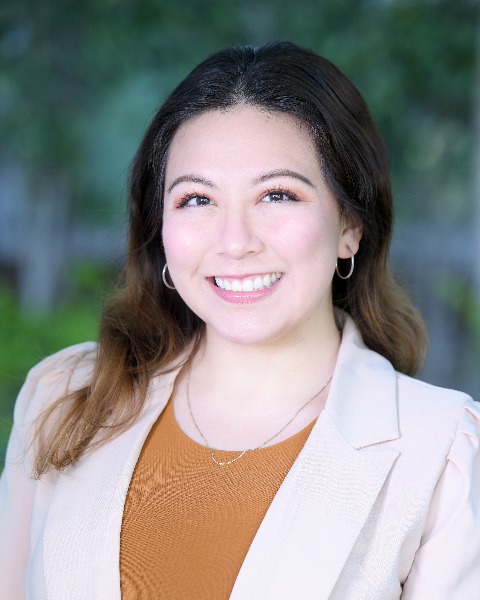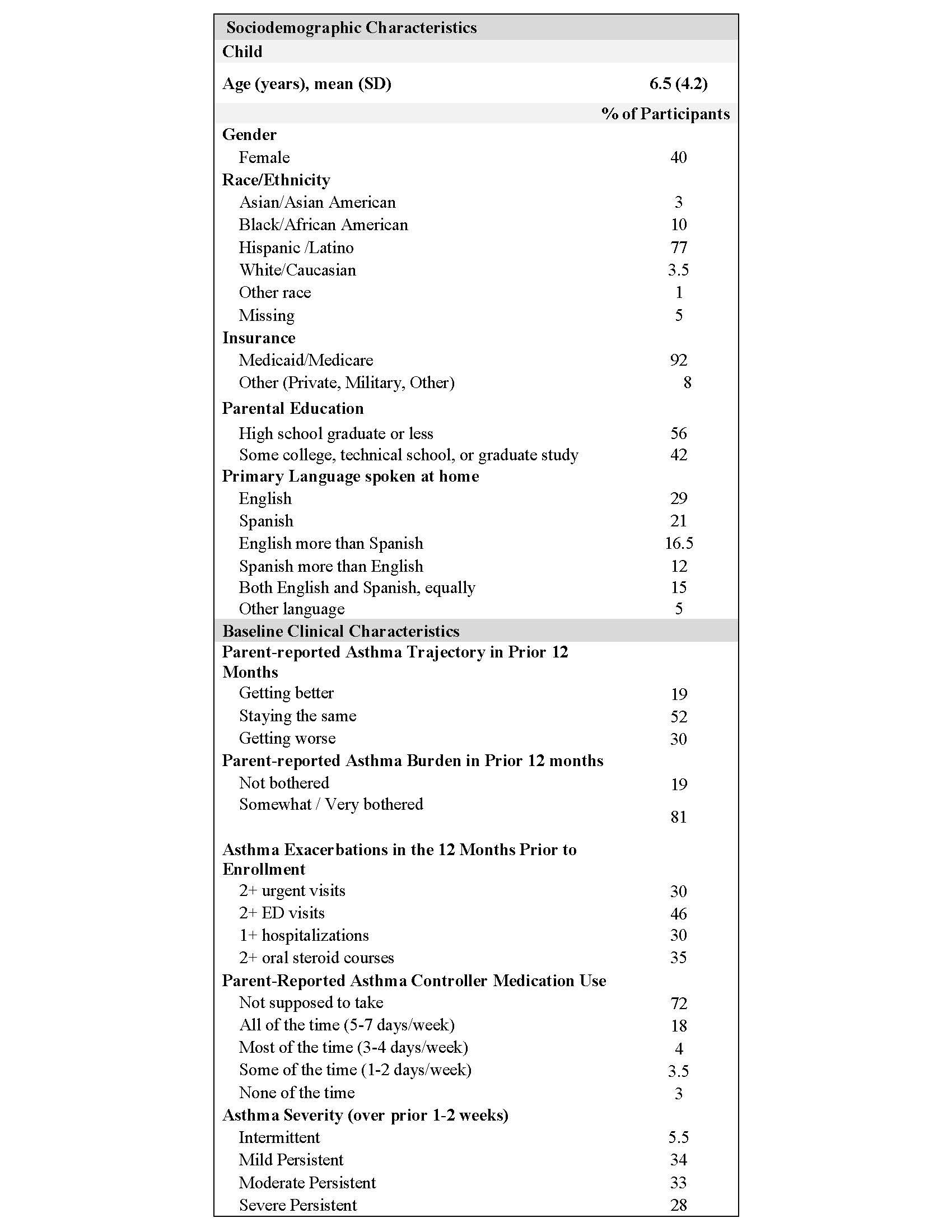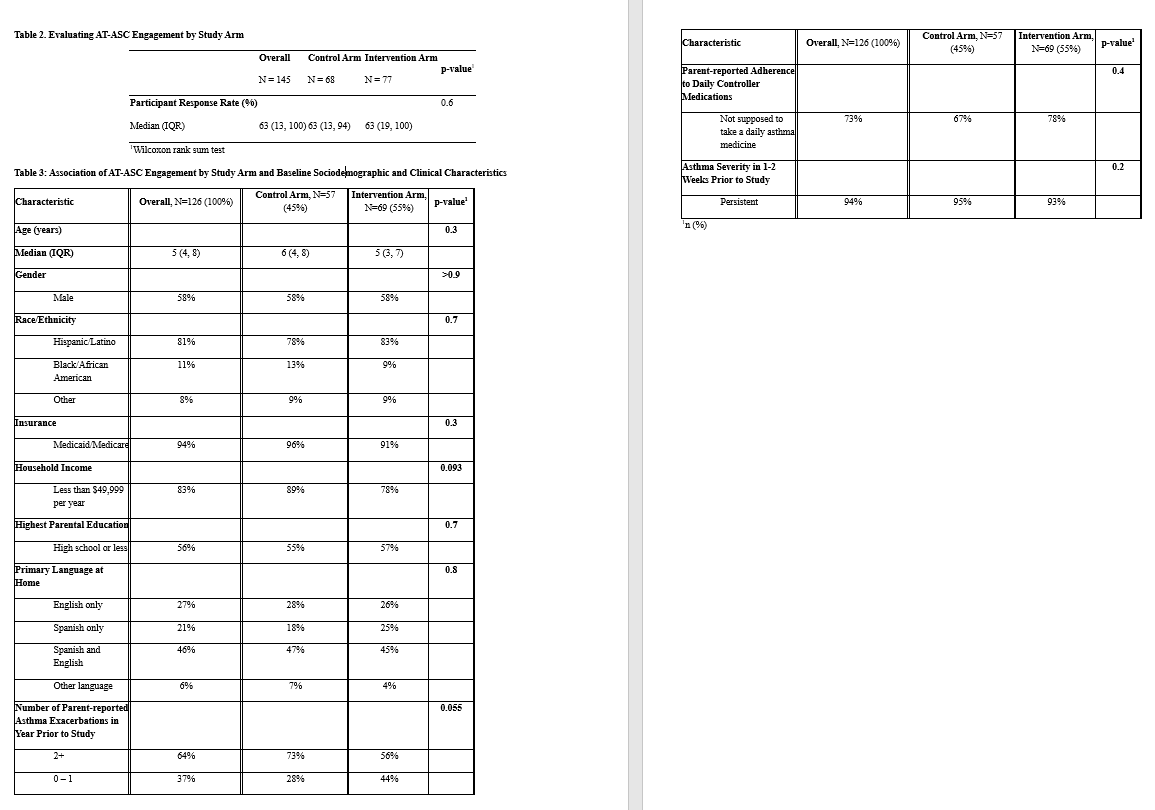Asthma 2
Session: Asthma 2
488 - Viability of long-term caregiver engagement with asynchronous telemedicine asthma specialist care (AT-ASC) after an emergency department (ED) asthma visit for children
Sunday, April 27, 2025
8:30am - 10:45am HST
Publication Number: 488.7108
Andy Nguyen, University of California, Los Angeles David Geffen School of Medicine, Elk Grove, CA, United States; Samantha Lozano, Children's Hospital Los Angeles, San Gabriel, CA, United States; Roxana Delgado-Martinez, University of California, Los Angeles David Geffen School of Medicine, Los Angeles, CA, United States; Ray Cheung, Breathium, Pasadena, CA, United States; Estefania Ramires-Sanchez, University of California, Los Angeles David Geffen School of Medicine, Sacramento, CA, United States; Alexandra M.. Klomhaus, University of California, Los Angeles David Geffen School of Medicine, Los Angeles, CA, United States; Jeanine E. Hall, Children's Hospital Los Angeles, Los Angeles, CA, United States; Bahareh Ravandi, Children's Hospital Los Angeles, Los Angeles, CA, United States; Todd Chang, Children's Hospital Los Angeles, Los Angeles, CA, United States; Kathryn Pade, Rady Children's Hospital San Diego, San Diego, CA, United States; Sande Okelo, UCLA Mattel Childrens Hospital, CULVER CITY, CA, United States

Samantha Lozano, B.S. (she/her/hers)
Clinical Research Coordinator I
Children's Hospital Los Angeles
San Gabriel, California, United States
Presenting Author(s)
Background: For under-served and high-risk patients, post-ED asthma care has been characterized by low show-rates (~30%) and nearly non-existent referrals to asthma specialists, despite high rates of ED visits and high desire for asthma specialist care. We have previously shown high post-ED engagement with an SMS text message-based asynchronous telemedicine asthma specialist care (AT-ASC) 3 months post-ED visit. The viability of long-term engagement with AT-ASC is unknown.
Objective: To measure engagement with AT-ASC among parents of children with asthma 12 months post-ED visit and assess for associations with baseline sociodemographic and clinical factors.
Design/Methods: This is a secondary analysis of data collected during a randomized clinical trial of AT-ASC among children presenting for ED asthma care (June 2022-August 2024). Caregivers of pediatric patients between 2-18 years of age seeking asthma care at a large urban pediatric ED were recruited to take part in 1) an asthma morbidity assessment during the ED encounter and 2) an asthma morbidity survey via SMS text (AT-ASC visit) every 3 weeks following the index ED visit. Intervention participants ALSO received: 3) initiation of controller medications within 24 hours; 4) automated treatment plans based on parent-reported medication adherence and asthma severity; and 5) an asthma specialist prescribing controller medications. We evaluated response rates to AT-ASC visit invites by treatment arm, then compared baseline sociodemographic and clinical characteristics by treatment arm for “above-average” individuals (>30% engagement) over 12 months post-ED asthma visit.
Results: 145 participants were randomized (control = 68; intervention = 77), including 10 % Black, 77 % Hispanic, 92 % on public health insurance, with significant asthma morbidity (Table 1). Overall mean engagement with AT-ASC visits was 60% in the 12 months post-ED visit, peaking at week 3 (78%) and lowest at week 42 (49%) (Figure 1). The proportion of above-average engagement was similar in control (65%) and intervention (66%) arms. Bivariable analyses of above-average engagement individuals revealed no significant associations between treatment arm (Table 2) and baseline sociodemographics or asthma morbidity (Table 3).
Conclusion(s): AT-ASC is a viable means of long-term engagement among parents of under-served and high-risk children seen for ED asthma care, particularly in comparison to historical post-ED follow-up rates. The impact of AT-ASC on long-term asthma care and outcomes is unknown.
Table 1. Baseline sociodemographic and clinical characteristics, N=145

Figure 1. Long-Term Engagement with AT-ASC, N=145
Figure 1. Long-Term Engagement with AT-ASC, N=145.jpeg
Table 2. Evaluating AT-ASC Engagement by Study Arm ; Table 3. Association of AT-ASC Engagement by Study Arm and Baseline Sociodemographic and Clinical Characteristics


